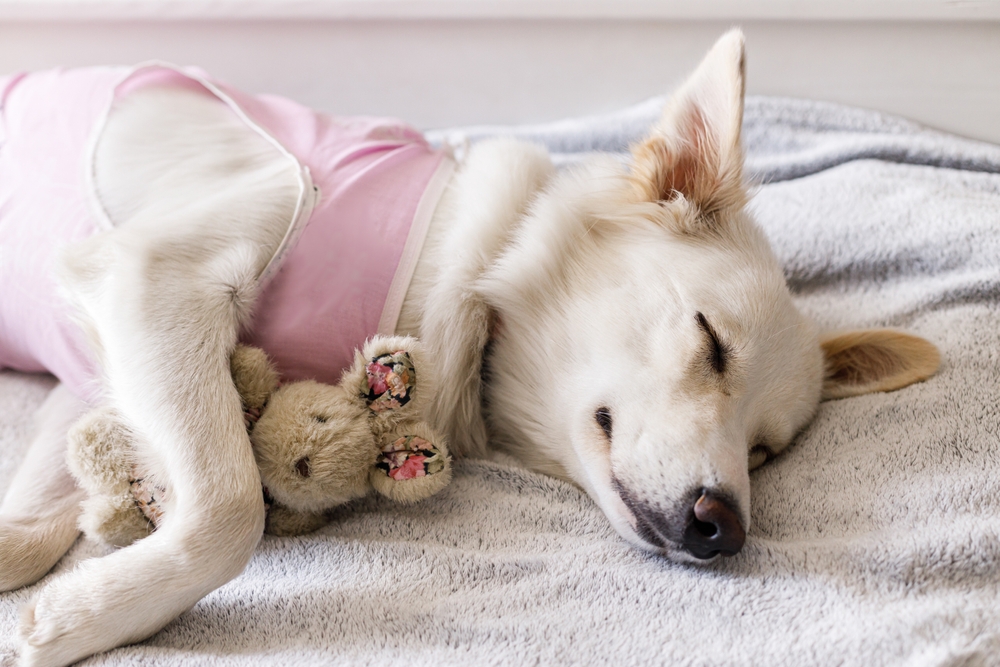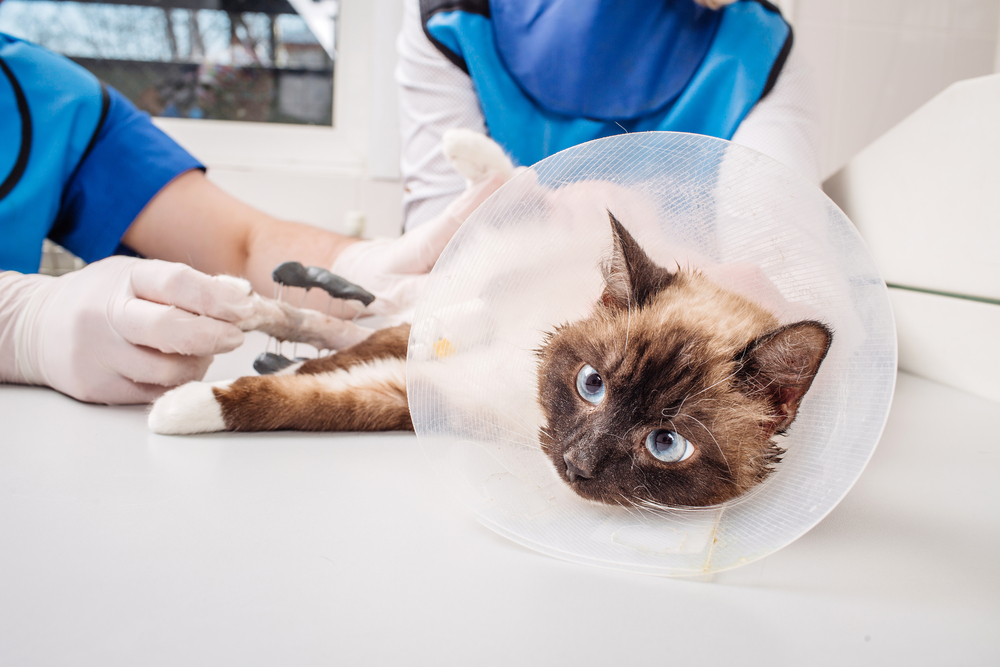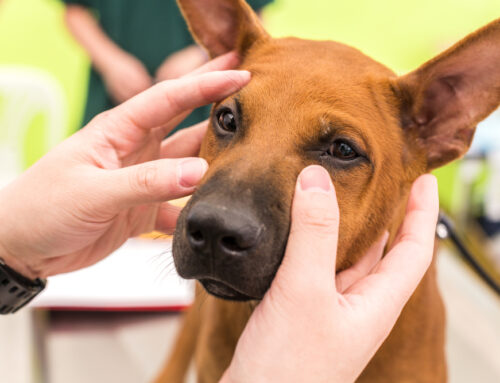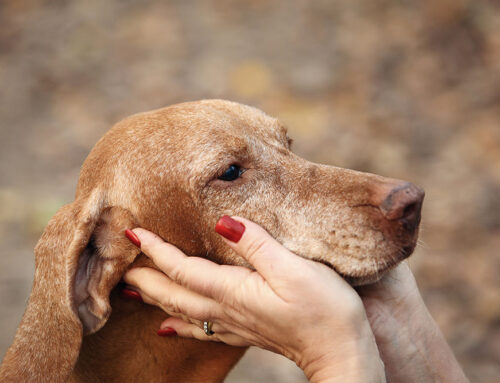Healing at Home: Post-Surgery Tips for a Smoother Pet Recovery
Helping your pet recover after surgery is one of the most important ways you can support their long-term health. Whether it’s a routine spay or a more complex procedure, the days that follow require attention, structure, and a little creativity to keep your pet comfortable, calm, and healing safely.
At Central Kentucky Veterinary Center in Georgetown, KY, we know how stressful recovery can be for both pets and their people. That’s why we’ve put together this guide to help you navigate home care with confidence.
Why Recovery Routines Matter
Pets often hide pain or discomfort, which can make it hard to tell how they’re really doing. But what happens in the days after surgery plays a major role in how well they heal.
Recovery complications are more likely when pets are too active, lick or scratch at their surgical site, or when subtle symptoms go unnoticed. A good home care routine can help you avoid:
- Infections
- Incision reopening (wound dehiscence)
- Swelling or fluid buildup
- Delayed healing
- Emergency rechecks or added costs
Your job? Keep things simple, quiet, and structured. Let your pet rest, follow your post-op instructions closely, and call us with any concerns.
Rethinking the Cone: Protection, Not Punishment
Let’s talk about the cone. Most pets hate it. Most owners do too. But, it’s one of the easiest ways to protect your pet from accidentally hurting themselves.
Why it matters: The cone, or E-collar, prevents your pet from licking, biting, or scratching at their incision. Even a quick lick can introduce bacteria or cause stitches to pull apart.
If your pet struggles with the standard plastic cone, possible alternatives include:
- Inflatable collars
- Soft recovery cones
- Medical onesies or recovery suits
- Neck braces (for certain procedures)
The right fit matters. Your pet should be able to eat and drink comfortably while still being prevented from reaching the surgical site. Some pets need the cone PLUS all the alternatives to keep them from getting to their sutures; others need just a soft cone. What’s most important is that you keep a close eye on your pet and take every precaution to ensure they don’t need a second surgery to fix ripped open stitches.
Need extra help making the transition easier? Creating a calm space with familiar blankets or adding a pheromone diffuser may ease the adjustment.
Why Crate Rest Works- Even If It’s Not Popular
Activity restriction is a cornerstone of surgical recovery. Crate rest or confinement doesn’t have to feel like punishment. It’s about giving the body the quiet it needs to heal.
Benefits of crate rest:
- Prevents jumping or sudden movements that stress healing tissues
- Reduces the risk of falls or play-related injuries
- Helps manage energy in pets who feel better before they’re actually healed
If your pet isn’t crate-trained, start small. Use a playpen, quiet room, or gated area to create a comfortable rest zone with soft bedding and familiar smells.
Need inspiration for keeping your pet mentally stimulated while resting? Try some DIY enrichment toys for cats or cognitive games for dogs that don’t require much movement.
Red Flags: Signs Something Isn’t Right
Healing isn’t always linear. Keep a close eye on how your pet looks and acts in the days following surgery. Contact us if you see:
- Redness or swelling that worsens
- Bleeding, discharge, or foul odors from the incision
- Lumps, bumps, or bruising near the surgical site
- Loss of appetite, vomiting, or difficulty walking
- Excessive sleepiness or unresponsiveness
If your pet is licking or chewing at the site even with a cone, that’s also a reason to reach out.
And if you’re unsure whether something qualifies as an emergency, AAHA’s guide to pet emergencies offers a good starting point.
What Happens If You Skip the Cone or Break the Rules?
We understand. It’s tempting to give your pet a break when they seem tired of their cone or eager to play, or when your legs have bruises from the cone hitting you over and over. But skipping key recovery steps can lead to setbacks like:
- Infections that require antibiotics or hospitalization
- Surgical sites reopening and needing additional procedures
- Increased pain, longer recovery, and greater stress for everyone
For a realistic, relatable guide, check out How to Survive Crate Rest with Your Dog, which offers tips and workarounds for making recovery more manageable.
It’s also a good idea to review potential dangers of popular dog chews if you’re thinking about offering something to keep your dog busy while they’re restricted- don’t let entertainment turn into broken teeth.

Creating the Right Recovery Setup
A few simple adjustments at home can make your pet’s recovery space safe and soothing. Here’s what we recommend:
Checklist:
- Choose a quiet, low-traffic part of the home
- Lay down soft, non-slip bedding
- Provide water (and food if allowed)
- Block off stairs or furniture to discourage jumping
- Add calming enrichment, like a frozen Kong or safe puzzle toy
- Keep medications and the cone nearby so they’re easy to access
- Crate, small room, baby gates, or even a leash tied to your desk while you work- anything to prevent too much movement.
You don’t need fancy gear. Just a little planning and consistency.
Common Questions About Surgical Recovery
Q: Can I take the cone off while I’m watching them?
A: It’s best to leave it on unless otherwise directed. A few seconds of licking can undo days of healing.
Q: How long will my pet need the cone?
A: Most pets wear it for 7–14 days, depending on the type of surgery and healing speed.
Q: Is redness or swelling normal?
A: Mild redness is expected in the first 48 hours. If it spreads, becomes hot, or is accompanied by discharge, call us.
Q: Can I give my pet human pain medication?
A: Never give over-the-counter medications unless directed. Many human drugs are toxic to pets.
Q: What if my pet seems bored or restless?
A: Try low-energy mental activities like DIY dog toys or hiding treats in a towel roll. Just be sure the activity doesn’t involve too much movement.
Support Every Step of the Way
At Central Kentucky Veterinary Center, we’re here to guide you from surgery day through full recovery. If you ever have concerns- about your pet’s incision, activity level, medications, or behavior- don’t hesitate to reach out.
Did you know pets who have laparoscopic surgery typically have much shorter recovery times? Ask us if it’s right for your pet.
Contact our team, or learn more about our services. With the right tools and a little patience, you’ll help your pet get back on their feet- safely, comfortably, and with fewer setbacks.
You’re not alone in this. We’re always here to help.







Leave A Comment